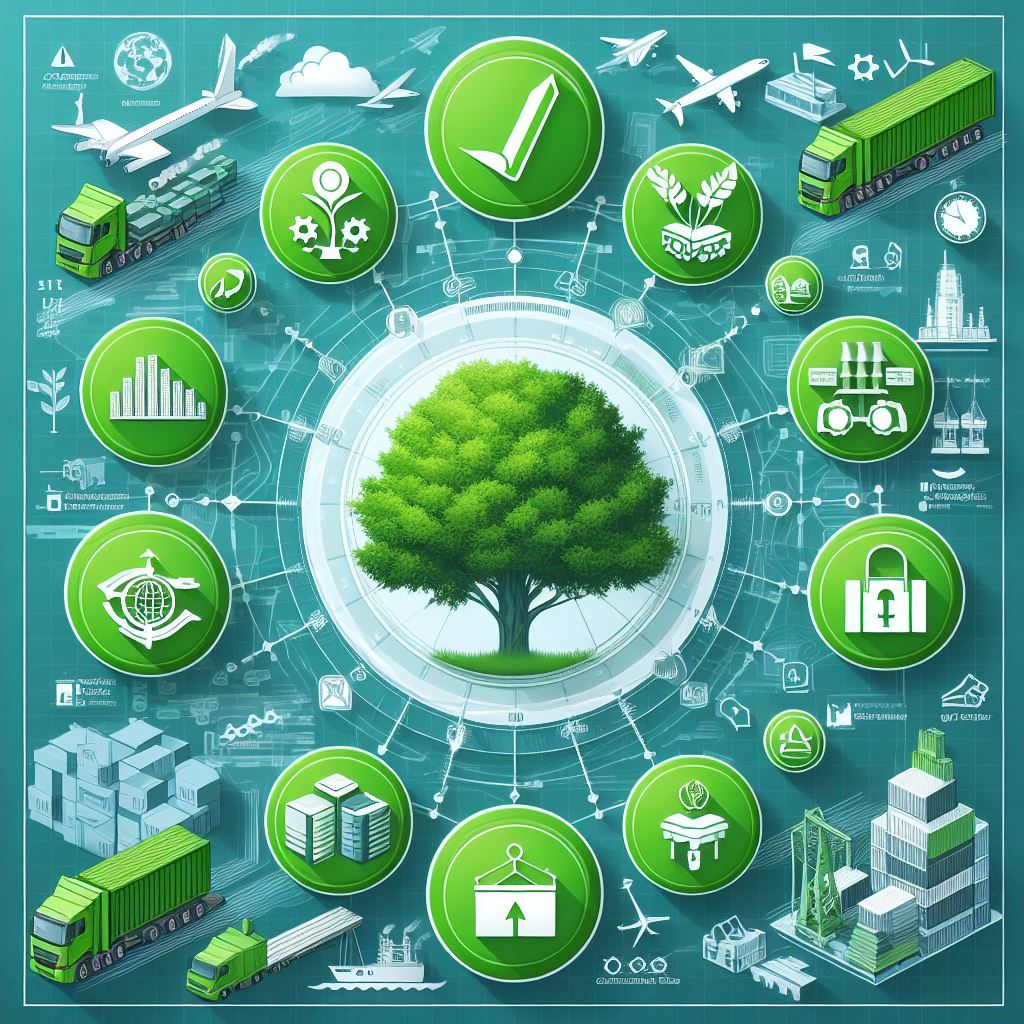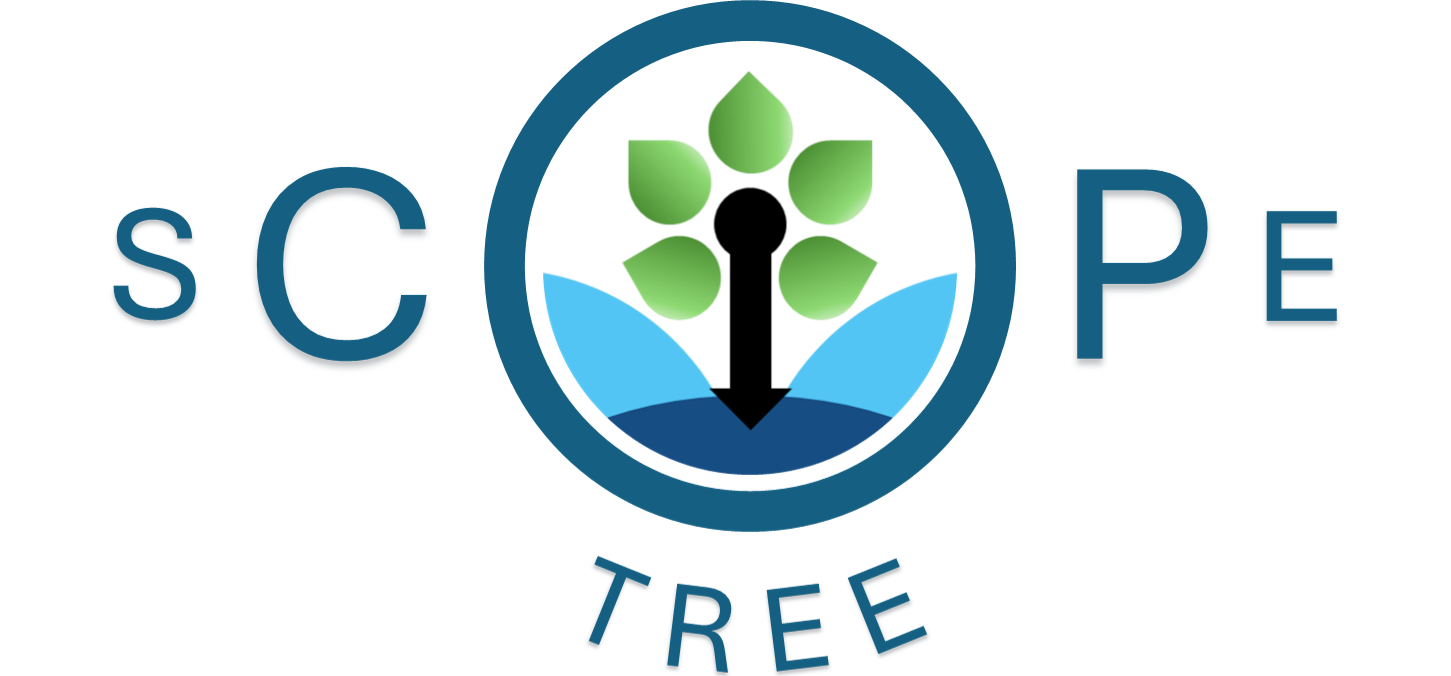SCOPE TREE, Sustainably maximize your profits with our decision-making platform for cost-effective and sustainable product and service design.
It offers the possibility of:
- visualize all environmental impact elements
- to control and optimize costs

Respect and protect the planet for future generations
Scope 1, Scope 2, and Scope 3 categories refer to greenhouse gas emissions associated with an organization:
- Scope 1: These are direct greenhouse gas emissions from fossil fuels (oil, gas, coal, etc.);
- Scope 2: It includes indirect emissions resulting from the production of energy purchased and consumed by the organization (electricity and heating/cold networks);
- Scope 3: These emissions cover a broader range and include indirect emissions that result from the organization’s activities but are outside its direct control: procured products and services, transport and logistics, waste, etc.
Scopes 1 and 2 are mandatory to carry out a greenhouse gas emissions assessment but they generally cover only 10% to 20% of total emissions.
Scope 3 has a broader scope, encompassing products purchased by the organization up to their use by the end customer, including transport and waste management.
Investing in environmentally friendly materials mitigates the impact of manufacturing and meets the growing needs of consumers.
Some benefits of sustainable materials:
- Sustainability: Sustainable materials are designed to last longer than their non-sustainable counterparts, reducing waste and conserving natural resources.
- Recyclable and/or reusable materials: The choice of truly recyclable and/or reusable materials helps reduce the demand for new resources (minerals, raw materials, etc.) and minimizes non-treatable waste (ultimate polluting waste) from industry.
Choosing sustainable materials helps preserve the environment, provides long-term savings, and helps provide a healthier future for future generations.
In the context of combating climate change, import and local purchasing decisions have distinct environmental impacts.
The following elements should be considered:
Local sourcing:
Advantages:
- Reduction of greenhouse gas (GHG) emissions from transportation, as products are generally transported over short distances.
- Support for the local economy and regional producers.
Disadvantages:
- Sometimes more expensive due to stricter local production standards.
- Limited seasonal availability for some products.
Import:
Advantages :
- Access to a wider variety of products, including exotic products.
- Sometimes cheaper due to lower production costs in other countries.
Disadvantages:
- Higher GHG emissions due to long-distance transportation.
- Risk of dependence on global supply chains.
In conclusion, buying local generally reduces the carbon footprint, but it is essential to take into account other factors such as seasonality and costs.
Total cost of ownership (TCO), represents all the costs associated with a good or service throughout its life cycle. Here’s why it’s crucial for a company’s profitability:
Development costs: This stage includes research, design, industrialization, negotiations and testing. Significant expenses can arise here.
Procurement and supply costs: After selecting a product, you must consider the costs of delivery, installation, training and spare parts.
Production costs: This includes the consumption of materials, energy and services required for continued use.
Maintenance costs: Planned, preventive maintenance or repairs incur costs related to downtime and lost production.
Environmental costs: These costs are often less obvious, but they are significant. They encompass the environmental impact of the product throughout its lifetime, such as carbon emissions, water consumption, etc.
Social costs: This level takes into account social costs, such as working conditions, employee health, etc.
End-of-life costs: When parts are no longer needed, their decommissioning can be costly.
By assessing these often hidden and/or non-aggregated costs, companies can make informed decisions and optimize their profitability. TCO is a key indicator for measuring the real value of the company.
In 2020, France adopted more ambitious and demanding environmental regulations for the construction industry. RE2020 (Environmental Regulation 2020) replaces the thermal regulation RT2012. Here are the key points to remember:
Main objectives:
- Energy sobriety and decarbonization: Reducing energy consumption and carbon emissions.
- Reduced carbon impact: Take into account emissions linked to the construction phase.
- Comfort in extreme heat: Ensure the well-being of occupants.
- Life cycle analysis: RE2020 is one of the first global regulations to integrate environmental performance via life cycle analysis.
Corporate Social Responsibility (CSR) is a field that first developed as a voluntary approach, but which has gradually acquired a regulatory, legal and normative framework in France and Europe. Here are some key elements to know:
The ISO 26000 Standard: This international standard, published in 2010, defines the scope of CSR around 7 central themes:
- Governance of the organization
- Human rights
- Working relationships and conditions
- The environment
- Loyalty of practices
- Consumer issues
- Communities and local development
Unlike other ISO standards, this one does not allow certification, but it serves as a benchmark for organizations wishing to adopt socially responsible behavior.
European CSRD Directive: Succeeding the NFRD (Non-Financial Reporting Directive), the CSRD (Corporate Sustainability Reporting Directive) aims to improve extra-financial reporting at the European level. It governs the way in which companies report their consideration of environmental, social and governance issues.
Water consumption in manufacturing has significant, often overlooked impacts. Here are some key points:
Virtual water: Virtual water, also known as the “water footprint,” refers to the amount of water indirectly used to produce a good or service. This water is used in industrial processes, washing, and cooling, but it is not directly visible in the final product. It is the water hidden behind our everyday products.
Waste and alteration: Factories can deplete available water resources and alter their quality. This can make the water unfit for consumption or irrigation, affecting local populations.
Water stress: Climate change is leading to a scarcity of water resources. Industries must find solutions to reduce their consumption and preserve water quality.
Dropouts down, but disparities: Water withdrawals are down, but disparities persist depending on uses, territories, and seasons. Climate change is making the situation worse.
Reconciling industrialization with water conservation is essential for a sustainable future.
Below is a summary description of PLM and ERP tools.
PLM (Product Lifecycle Management):
PLM manages the entire lifecycle of a product, from its design to its production and maintenance.
The objective is to follow all the stages of the product, from ideation to the end of its useful life.
ERP (Enterprise Resource Planning):
ERP manages various business processes throughout the organization, such as the supply chain, operations, finances and human resources.
Unlike PLM, ERP focuses on the resources needed to manufacture and sell products.
It optimizes flow management for the manufacturing and logistics stages.
In summary, PLM manages product data, while ERP manages the resources to manufacture and distribute these products. They are complementary and essential for a modern company.
In addition to these descriptions, it should be noted that these systems are often partitioned to professions, making the exploitation of company data complex.
Another limiting element for the performance of these systems is the ever-increasing consideration of External Supply Chains.
Here we describe some environmental issues related to local versus international manufacturing:
Local Manufacturing
Reduction of CO2 emissions:
- Transportation: Locally produced products require less transportation, which reduces greenhouse gas emissions.
- Short circuits: Promoting short circuits helps reduce the carbon footprint linked to logistics.
Support for sustainable agriculture:
- Agricultural practices: Local products often come from more environmentally friendly agricultural practices, such as agroecology and organic farming.
- Seasonality: Consuming seasonal products reduces the environmental impact linked to greenhouse production or importation.
Preservation of biodiversity:
- Crop diversity: Local production encourages the diversity of crops and lifestyles, which contributes to the preservation of biodiversity.
International Manufacturing
Transportation Impact:
- Long distances: International transport of goods generates significant CO2 emissions, particularly by plane and ship.
- Pollution: Transport ships can contribute to ocean pollution and the degradation of marine ecosystems.
Deforestation and land use:
- Intensive agriculture: The production of certain products on an international scale can lead to deforestation and the conversion of natural land to agricultural land, such as soy and palm oil.
- Loss of biodiversity: These practices can lead to significant loss of biodiversity and the destruction of natural habitats.
Environmental standards:
- Varying Regulations: Environmental standards can vary from country to country, and some countries may have less stringent regulations, which can lead to increased pollution.
- Prohibited substances: The import of products manufactured with substances prohibited in the European Union may pose risks to the environment and health.
Local manufacturing has several environmental benefits, including reducing CO2 emissions, supporting sustainable agriculture and preserving biodiversity. On the other hand, international manufacturing can have significant negative impacts, including due to transportation, deforestation and varying environmental standards.


